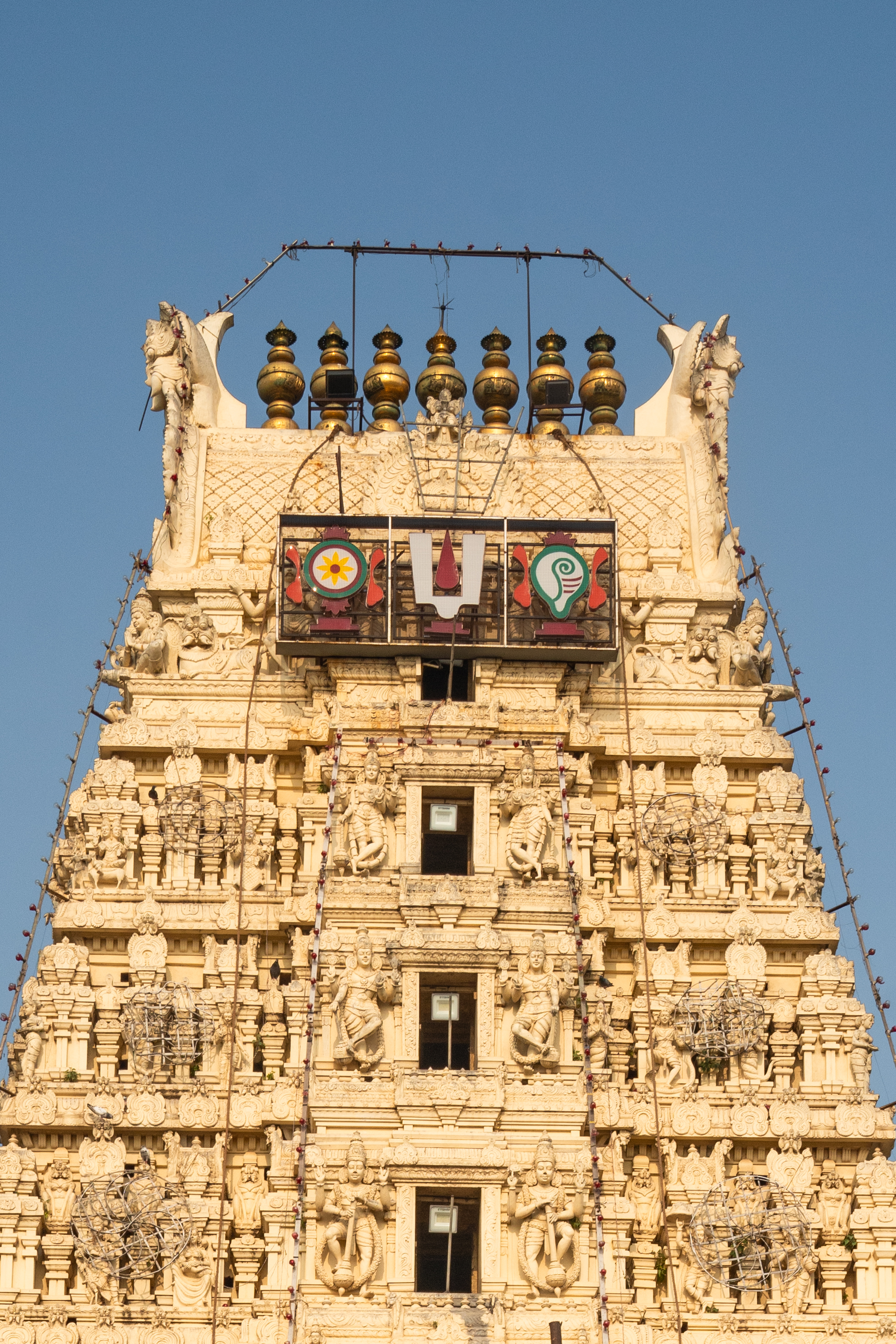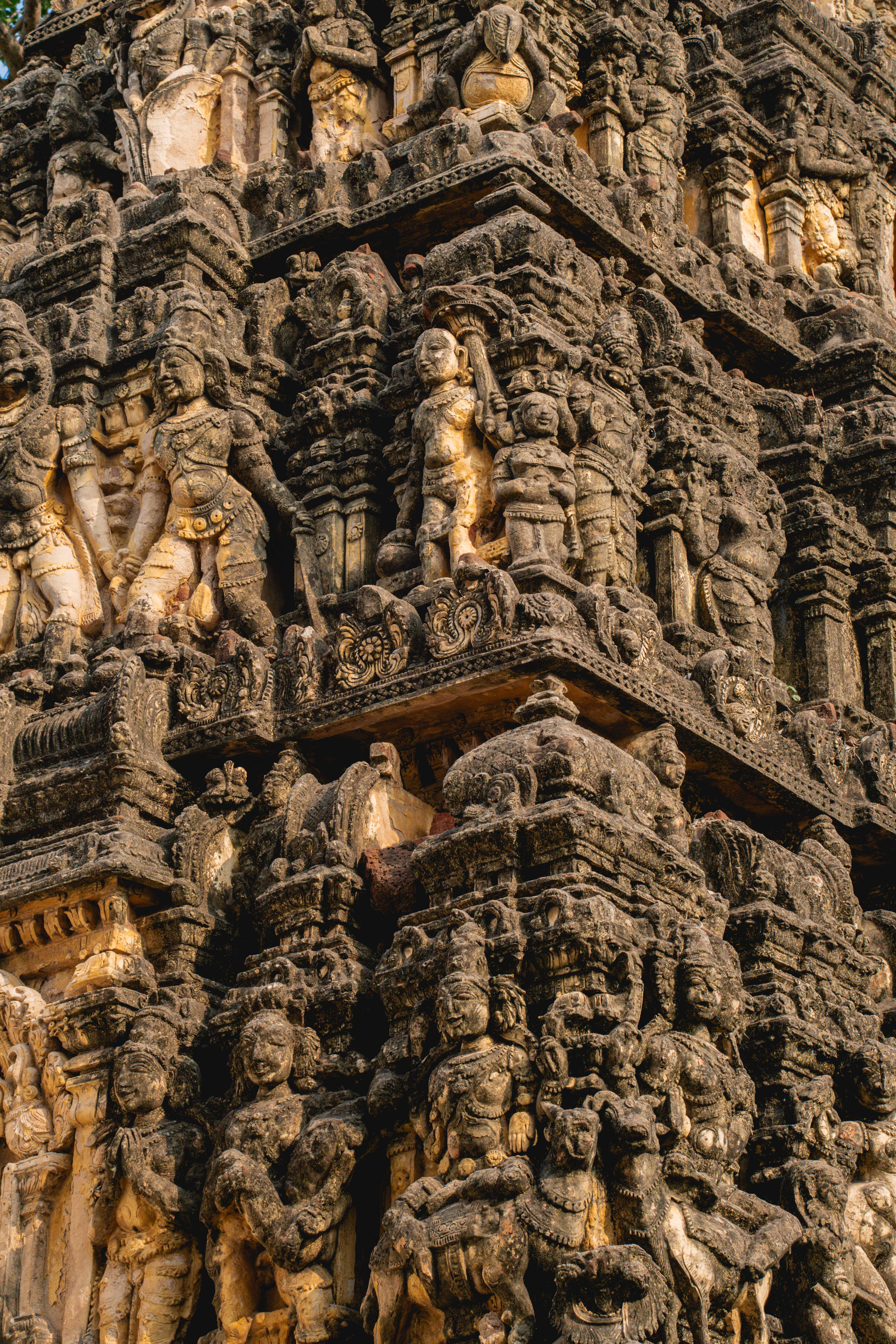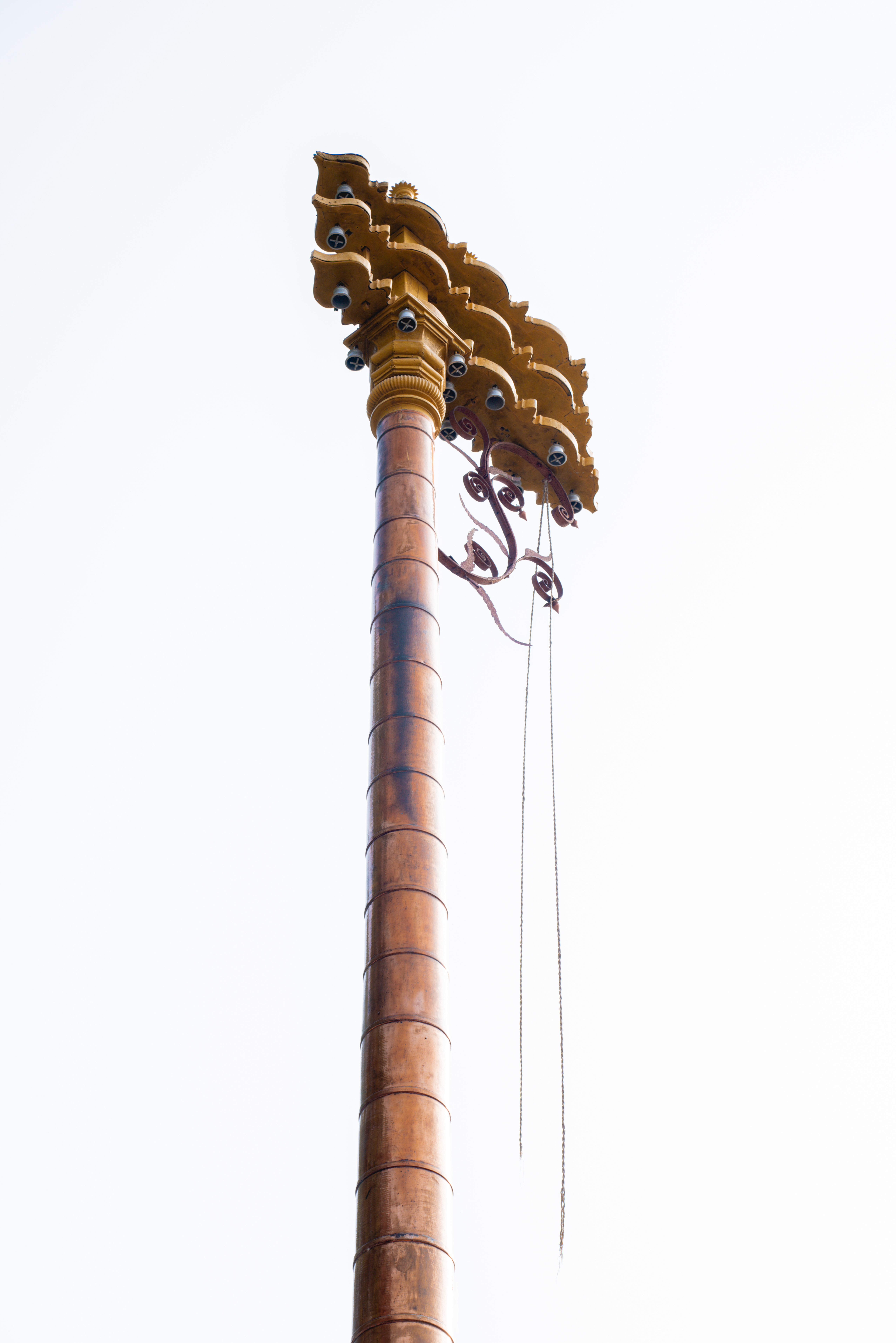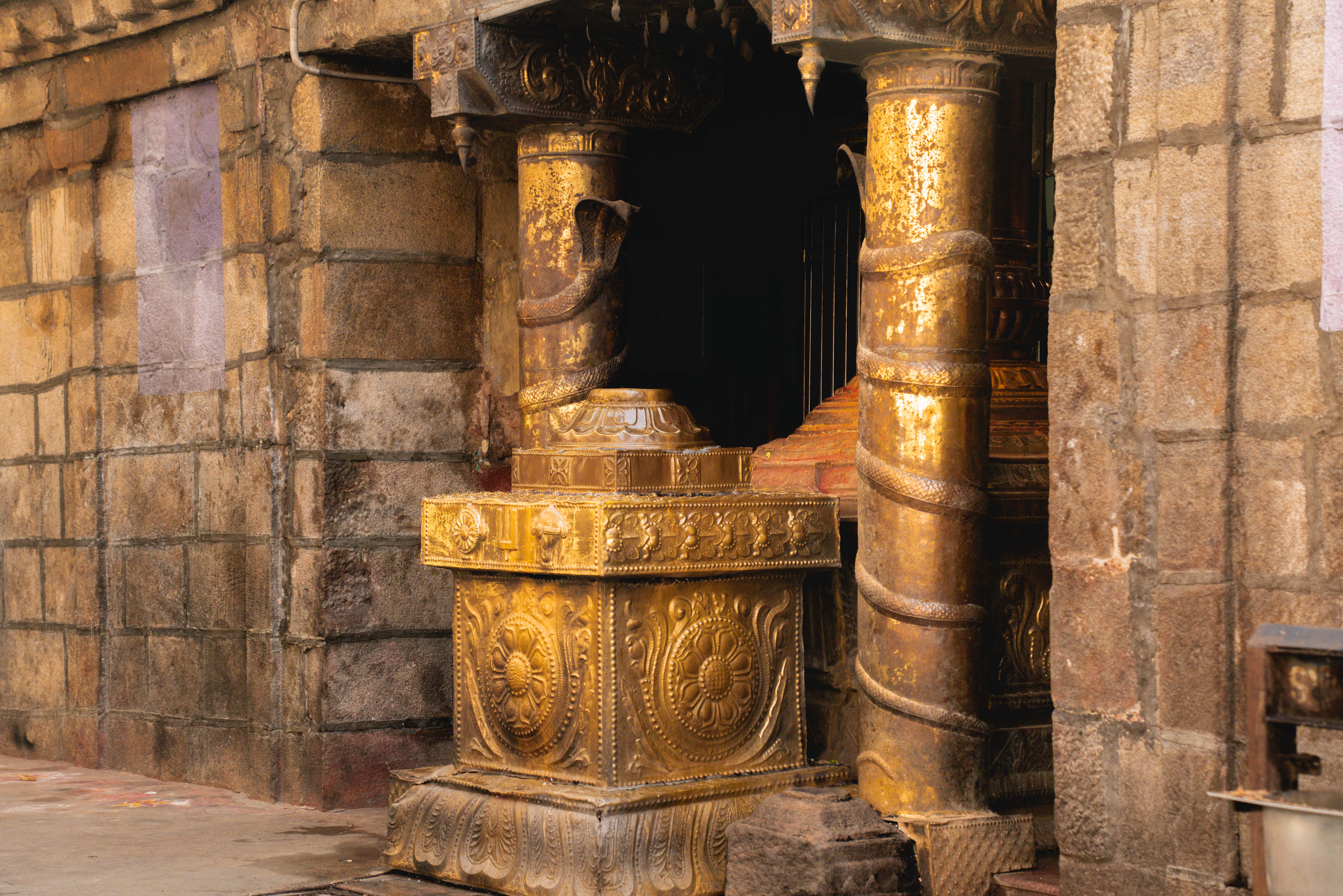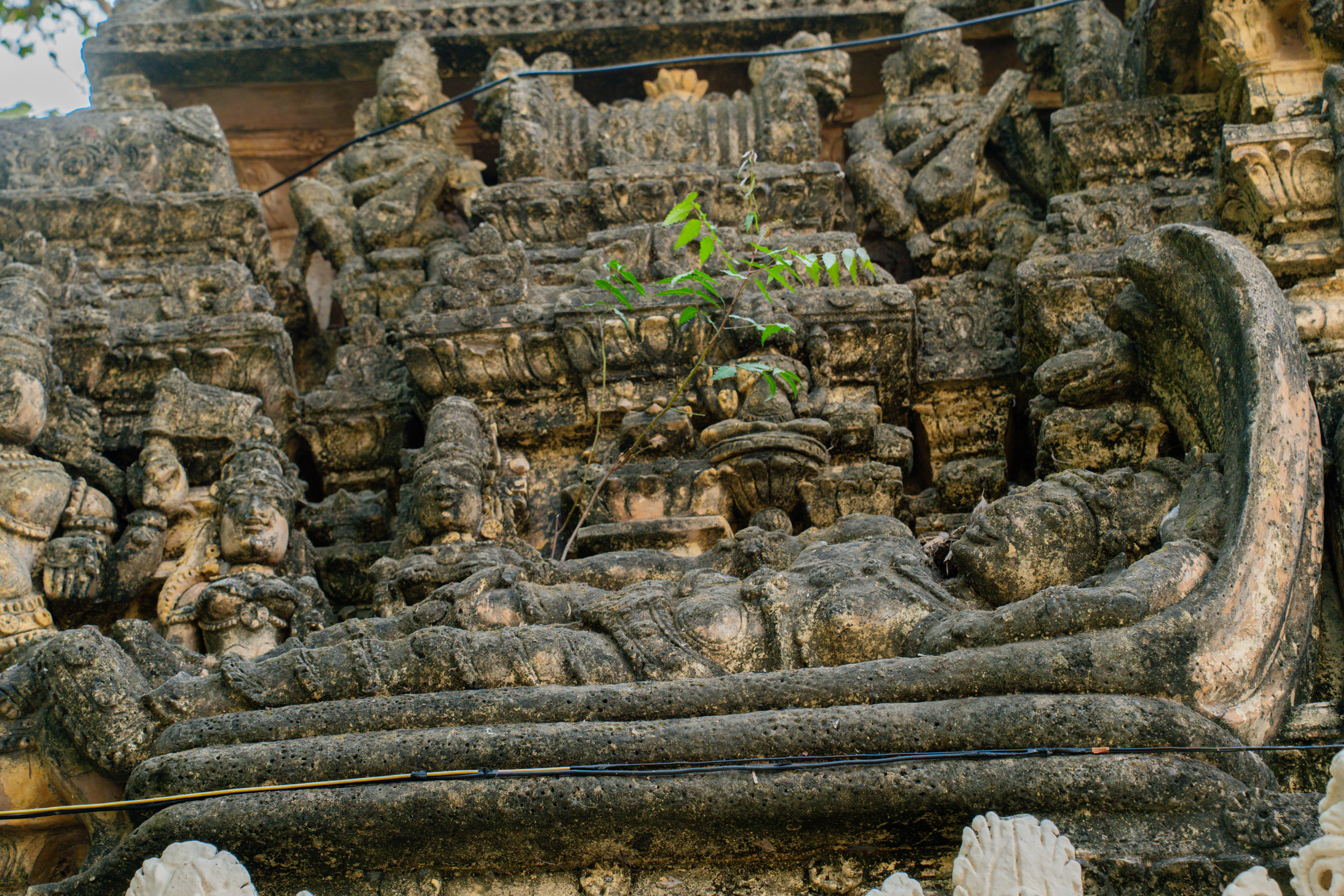The Ranganayaka Swamy Temple, also known as the Talpagiri Ranganathaswami Temple or the Ranganayakulu Temple, is an ancient in Nellore, Andhra Pradesh. The Pallava dynasty, known for their extensive rule over the region, established the temple in the 7th century CE. In the 12th century CE, the temple underwent significant renovations and expansions under the patronage of King Raja Mahendra Varma of the Chola dynasty, further enhancing its grandeur and spiritual significance. Lore of Ranganayaka Swamy Temple The temple's name, "Talpagiri," is derived from a beautiful legend involving Lord Sri Maha Vishnu and his wife, Sridevi. According to the story, when Lord Vishnu descended to Earth, he desired a place to rest with Sridevi. He requested Adisesha, the serpent deity, to become their dwelling. Adisesha then transformed into a mountain, creating what is now known as "Talpagiri Kshetram." The term "Talpa" signifies the divine bed of Adisesha, upon which Lord Vishnu rests. Additionally, it is believed that the great Sage Kashyapa conducted the Poundarika Yagna, a sacred ceremony, at this location on the day of Ekadasi. Lord Vishnu appeared and blessed the sage, further solidifying Talpagiri Kshetram as a special and holy place. The Ranganayaka Swamy Temple's architecture The Ranganayaka Swamy Temple stands majestically on the banks of the Penna River, enhancing its scenic beauty and serene atmosphere. The temple is renowned for its impressive architectural features, including the 70-foot-tall wind tower known as the "Gaaligopuram," adorned with gold-plated vessels called "Kalashams." This tower was built by Yeragudipati Venkatachalam Panthulu, a devoted follower of Lord Ranganatha. The temple complex features intricately carved structures and is an excellent example of Dravidian architecture. The black stone sculpture, measuring about 10 feet long, depicts the main deity, Lord Ranganatha, lying on a serpent bed named Anantha. The statue features the goddess Sridevi sitting on the Lord’s chest and Lord Brahma on a lotus emerging from the Lord’s navel, with smaller statues of Sridevi and Bhudevi at the Lord’s feet. In front of the main deity, there are festival deities known as Utsava murtis and a sitting statue of the goddess Sridevi, known as Ranganayaka Devi. This temple's unique architectural feature is that the idols face west towards the Penna River, unlike most temples where the deity faces east. Additionally, the temple includes smaller shrines dedicated to Goddess Rajya Lakshmi Devi, Goddess Andal Ammavari, Lord Rama, Lord Narasimha, and Lord Venkateswara. The temple hosts an annual festival called Brahmotsavam in March or April, drawing numerous devotees. During the festival, the idol of Lord Ranganatha is paraded on various vehicles like Garuda Vahana, Hanumantha Vahana, Sesha Vahana, and Simha Vahana. The temple also features a popular mirror house that reflects the deities' images and walls decorated with the Sri Vishnu Sahasranamavali, a list of 1000 names for Lord Vishnu, enhancing its spiritual ambiance.
|
To be updated
